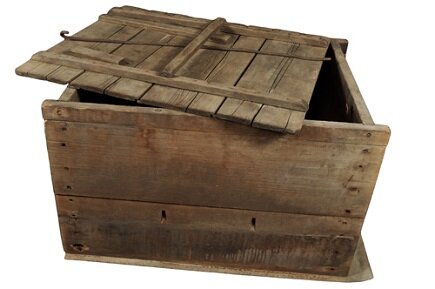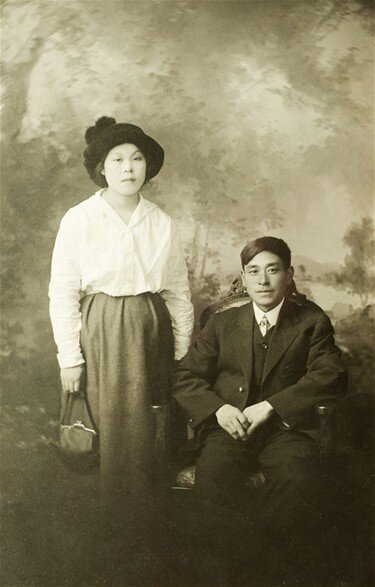Picture Bride
Lesson Objectives:
Students will recognize the general characteristics of individuals who emigrated from Japan to Canada around 1900.
Students will appreciate some of the difficulties the Issei ( first generation of Japanese immigrants) faced when moving to Canada.
Alberta Curriculum Connections:
4.2 The Stories, Histories and Peoples of Alberta
4.2.1 Appreciate how an understanding of Alberta’s history, peoples, and stories contribute to their own sense of belonging & identity
Recognize how stories of people and events provide multiple perspectives on past and present events (Identity; Time, Continuity and Change)
4.3 Alberta: Celebrations and Challenges
4.3.3 Examine, critically, Alberta’s changing cultural and social dynamics by exploring and reflecting upon the following questions and issues:
In what ways has Alberta changed demographically since 1905?
5.2 Histories and Stories of Ways of Life in Canada
5.2.1 Appreciate the complexity of identity in the Canadian context
Acknowledge the contributions made by diverse cultural groups to the evolution of Canada (Culture and Community; Identity; Time, Continuity and Change)
Recognize how changes in society can affect identity (Culture and Community; Identity)
7.2 Following Confederation: Canadian Expansion
7.2.1 Recognize the positive and negative aspects of immigration and migration (Global Connections; The Land: Places and People; Citizenship; Identity*
7.2.5 Evaluate the impact of Confederation and of subsequent immigration to Canada from 1867 to the First World War by exploring and reflecting upon the following questions and issues:
How did Asian immigrants contribute to the development of Canada (i.e., Chinese railway workers)? (Time, Continuity and Change; Culture and Community; The Land: Places and People)
Activities:
Brainstorm as a class or in groups reasons why people may wish to/choose to/have to leave their country of origin. Why might they pick a particular country to move to?
Review with students: The Issei- Cultural Heritage.
Pose the following questions to the students. Lead a discussion around their answers.
Think about these earliest Japanese immigrants. If you were to picture them in your mind, define their characteristics.
Are they more likely to be men or women?
The oldest in their family or the youngest?
Wealthy, middle-class or poor?
Old (as in their 70s) or young (as in their teens or 20s)?
Japanese immigrants in the early 1900s tended to be primarily men (as, indeed, were a majority of all immigrants to Canada at that time). There were not the same restrictions on Japanese women coming to Canada as there were for Chinese women but it was difficult for women to immigrate on their own. Many of these immigrants were young – in their late teens or early 20s. They tended to be younger sons. It was the practice for the eldest son to inherit from the father. Younger sons had to more often find their own ways. Immigrants were often from the middle-class. Wealthy families could often provide for all children; poor families were often too poor to have immigration as an option.
Imagine this scenario: A young man of 19 or so travels to Canada from Japan. He believes he is going to make it rich and go back to Japan where he can live like a king. Some do make enough money to return to Japan. Many others don’t. Those who did not make it rich now started thinking about living more long-term in Canada. They started thinking of settling down – getting married, having children. As most of the Japanese immigrants were men, how did they find a wife? Pose this question to your students.
Introduce the photograph of the picture bride and groom.
Picture brides were arranged through a friend or relative. The prospective groom and bride would exchange pictures and letters. If they liked what they saw, they would arrange to be married. It was a fashionable practice and appealed to young ladies who desired to leave Japan for the riches of a new country.
Invite students to think deeply about the practice of picture brides by asking the following questions:
How would you feel about leaving your family and friends?
How would you feel if a friend or relative arranged your marriage options?
If you were taking a photograph of yourself, what sort of background, details or clothing would you use to show that you are important? Well to do? Kind? Interested in getting married?
If you did not want to get married, how would you tend to present yourself in the photograph?
Was it a good option for the groom?
Was it a good option for the bride?
As students are considering whether or not the arranged marriage was a good option for the groom and bride, introduce the photograph of the bath house tub and have students read about the bath house tub. One tradition many Issei brought from Japan was the bath house. This was a ritual bath, not a cleansing one (in fact the person cleaned themselves prior to entering the tub). Baths were taken in descending social order with the oldest male bathing first and the wife of the youngest son last. Japanese culture had very specific social hierarchies with precise rules of behavior. If it was difficult for women to come to Canada on their own and Japanese society had a rigid social structure, how might that affect whether or not it was a good option for the bride?



